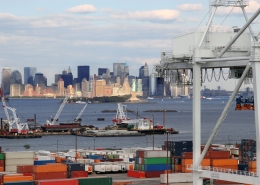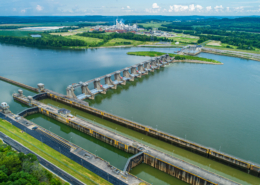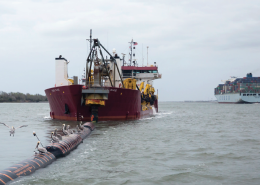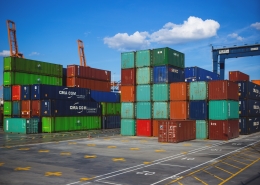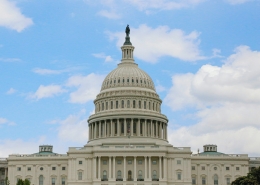The number of people killed in traffic fatalities in the United States fell to its lowest level in modern history in 2011 – 32,479 – but progress stalled for a decade. Deadly crashes accelerated during the COVID-19 pandemic. By 2022, 42,795 people lost their lives on U.S. roads. A look into the causes for 2021 (the most recent year for which data is available) show the problem to be broad and deep. Deadly crashes went up that involved speeding, impaired driving, large trucks, in urban areas, at night and on weekends. And pedestrians fatalities grew by 12.5 percent in one year.
One figure does stand out: 52 percent of all fatal crashes in 2021 took place on principal and minor arterials, including 60 percent of all pedestrian fatalities. Indeed, a multi-year national study of “hot spots” for pedestrian crashes over several years found that a solid majority of pedestrian fatalities were on such arterials – roads with 5 or more lanes, traffic volumes over 25,000 a day, and adjacent commercial, retail and service land uses. In addition, three-quarters of these hot spots were bordered by low-income neighborhoods. Some cities are now collecting data to define “High Injury Networks,” so they can focus resources on the most problematic corridors.
Solving the arterial safety problem will not be easy, as it is embedded in decades of land use policies and transportation practice that emphasized vehicle mobility and access. But countries with profiles similar to ours are making strides in reducing traffic fatalities, particularly for pedestrians – who have no airbags to protect them. In New Zealand and Australia, the pedestrian fatality rate has declined compared to the steep rise in the United States. These countries have spent the last decade making pedestrian safety a foundational transportation planning principle, reworking their approach to land use, and becoming intentional and proactive in seeking interdisciplinary solutions in road design.
Changing the Approach
In the United States, changes to our approach to transportation safety are also underway, with an increased emphasis on Safer Roads and Safer Speeds under the Safe System Approach. Secretary Pete Buttigieg launched the National Roadway Safety Strategy (NRSS) two years ago, engaging all of U.S. DOT’s surface modal administrations in addressing the department’s top priority. The NRSS sets our commitment to work together to reduce traffic deaths to the only acceptable number: zero. The Federal Highway Administration (FHWA) is taking many actions under the NRSS, including support for implementation of State and local Complete Streets policies. These policies seek to ensure the safe and adequate accommodation of all users of the transportation system. FHWA has defined a Complete Streets Design Model to summarize an approach to roadway design that prioritizes safety, comfort, and connectivity for all road users.
In general, this design model includes careful consideration of measures to set and design for appropriate speeds; separation of various users in time and space; improvement of connectivity and access for pedestrians, bicyclists, and transit riders, including for people with disabilities; and implementation of safety countermeasures.
FHWA is acting to support implementation of this model by State, regional, Tribal, and local agencies. For example, FHWA has issued multiple new resources to help communities in setting appropriate speeds, including updating the Manual on Uniform Traffic Control Devices to prioritize context and safety over consideration of prevailing speeds. The agency recently confirmed the safety benefits of separated bike lanes and now recommends them on higher speed roads. And Active Transportation networks will soon be supported with a new grant program to help communities plan and build them.
What is often most difficult is changing policies, rules, and procedures so safety for all users becomes the default approach. FHWA’s Complete Streets initiative began with an extensive report to Congress identifying the opportunities and challenges in moving to a Complete Streets Design Model, and its findings continue to guide FHWA’s work. For example, FHWA issued guidance to support Complete Streets in resurfacing, restoration, and rehabilitation projects on the National Highway System. The new guidance puts safety for all road users front and center, enabling such projects to become a key strategy for improving roadway safety at little additional cost.
Congress has provided important new tools, including the Safe Streets and Roads for All planning grant program and the requirement that State’s complete Vulnerable Road User Safety Assessments, which are resulting in the identification of hundreds if not thousands of new projects and strategies that will improve safety.
The curve may finally be bending in the right direction. The National Highway Traffic Safety Administration has reported that as of the first half of 2023, traffic fatalities had inched downward for five quarters. We cannot yet know if this is a result of any changes to roadways, but we do know that individual countermeasures and roadway reconfigurations can yield a dramatic reduction in crashes. For people who have experienced crashes that have left them with life-changing injuries or taken away loved ones, these changes cannot come soon enough.
Note: Except for the statutes and regulations cited, the contents of this document do not have the force and effect of law and are not meant to bind the States or the public in any way. This document is intended only to provide information regarding existing requirements under the law or agency policies.





